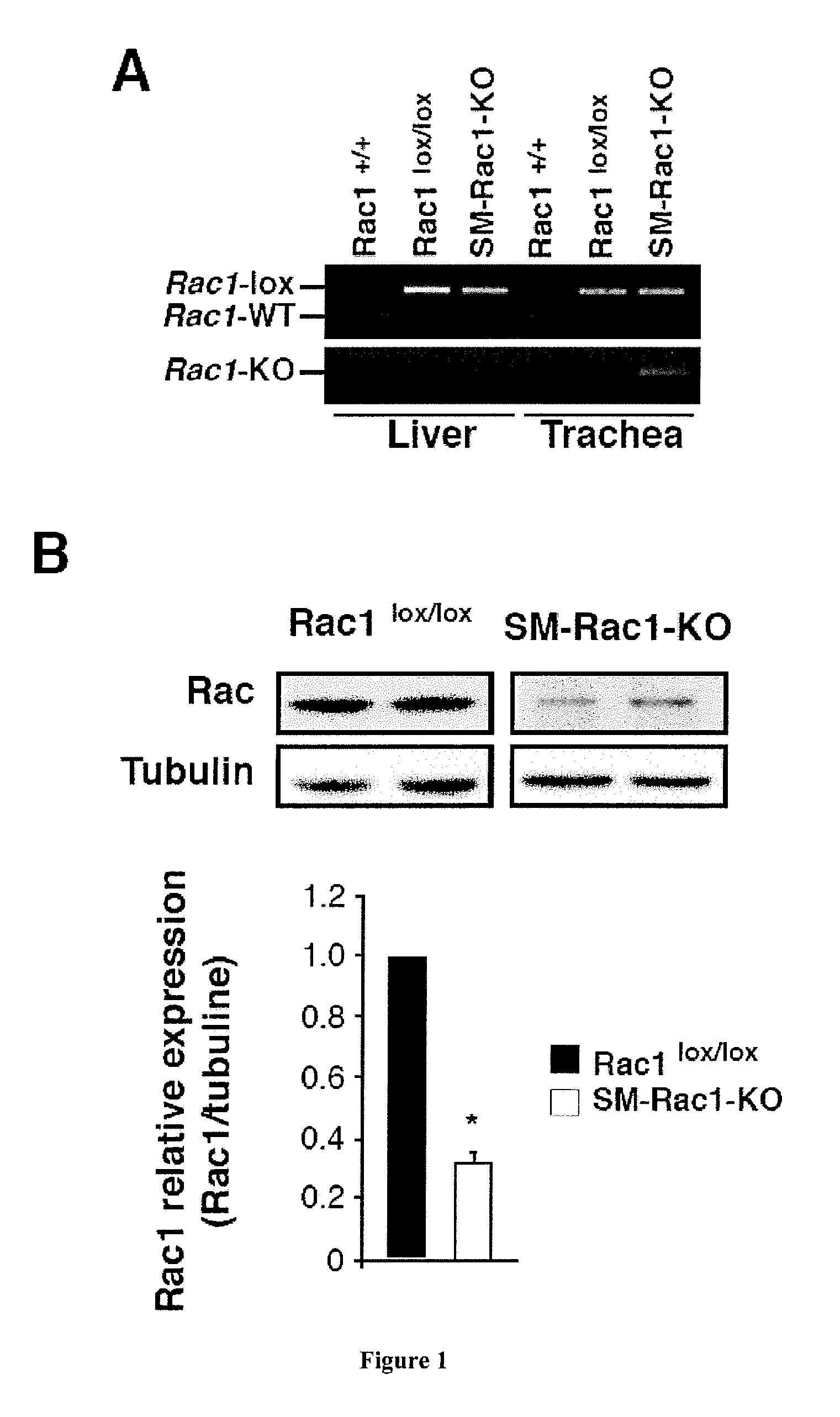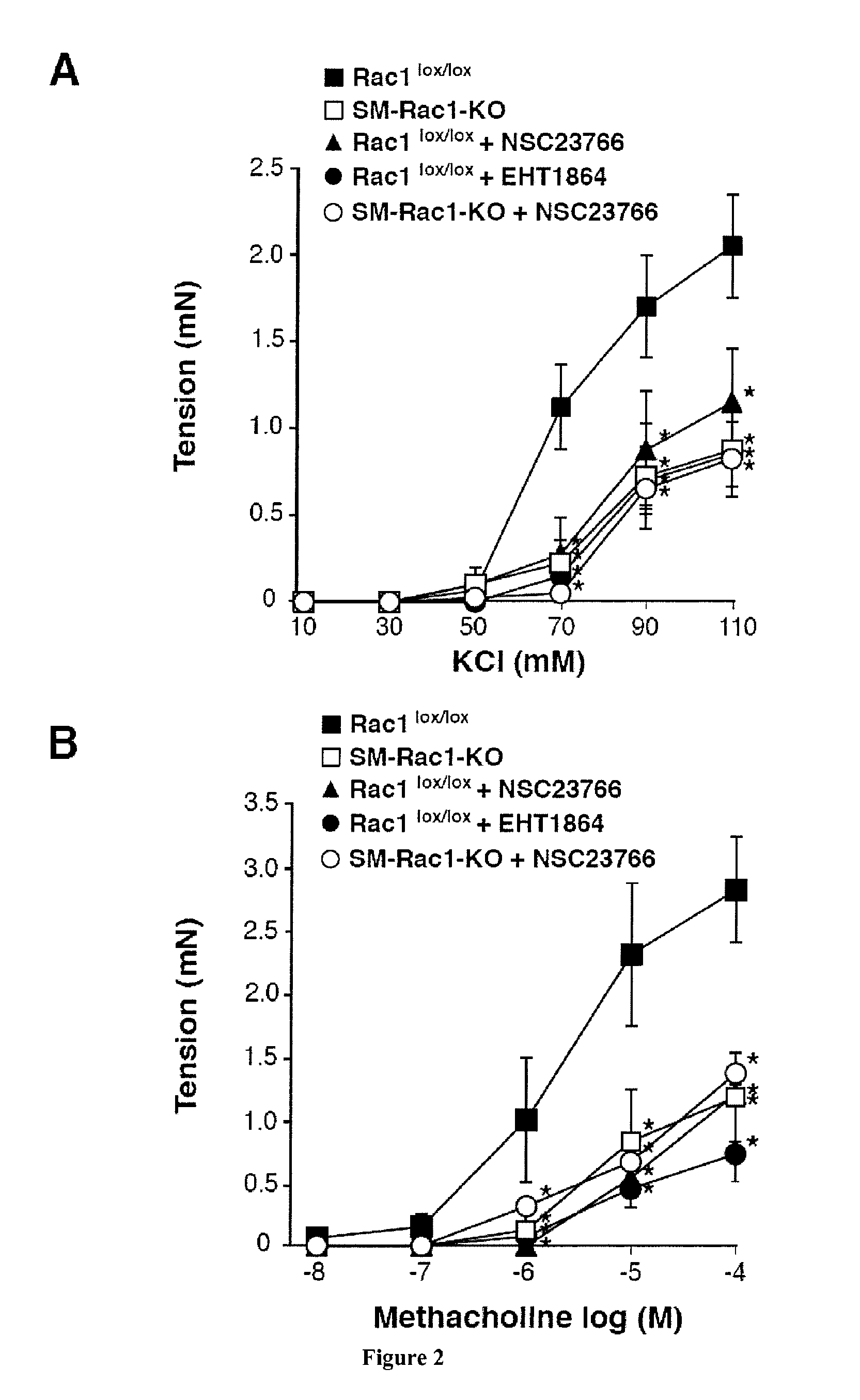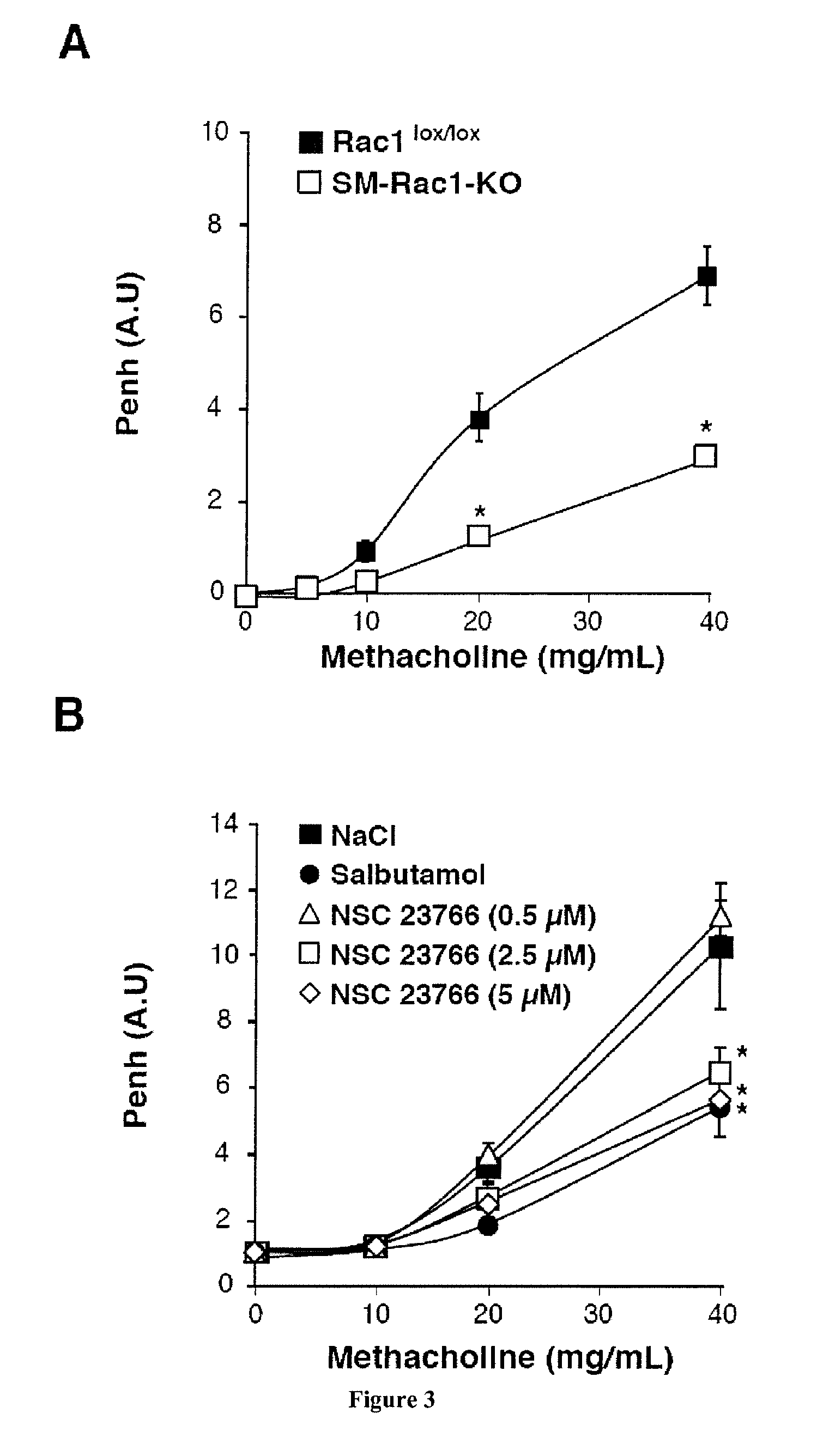RAC1 Inhibitors for Inducing Bronchodilation
a bronchodilator and rac1 technology, applied in the field of rac1 inhibitors for inducing bronchodilation, can solve the problems of severe asthma that escapes to usual treatment or frequently requires higher doses, affects 300 million people worldwide, and is incompletely reversible of airway obstruction
- Summary
- Abstract
- Description
- Claims
- Application Information
AI Technical Summary
Benefits of technology
Problems solved by technology
Method used
Image
Examples
example 2
Murine Model of Experimental House Dust Mite-Induced Asthma
[0105]Material & Methods
[0106]Allergic asthma induction: House dust mite model (HDM) of chronic asthma was used. In this case, mice were sensitized on days D0, D7, D14 and D21 by skin application of 500 μg of total extract of HDM Der f (Stallergenes) in 20 μL of dimethylsulfoxyde (DMSO, Sigma-Aldrich) on the ears. DMSO was used as an irritant able to facilitate the allergen penetration. Intranasal challenges were performed with Der f (250 μg in phosphate-buffered saline 250) on D27 and D34. Mice were sacrificed on D35 for ex vivo analysis.
[0107]Results
[0108]To confirm the direct role of Rac1 activity in AHR, we analyzed the effect of EHT1864 on the contractile responses to methacholine and KCl in bronchial rings from control and house dust mite (HDM)-sensitized mice (FIG. 7). We recorded in this allergic animal model a stronger contraction in response to KCl (FIG. 7, A) and methacholine (FIG. 7, B) compared to control animal...
PUM
| Property | Measurement | Unit |
|---|---|---|
| concentrations | aaaaa | aaaaa |
| concentrations | aaaaa | aaaaa |
| resistance | aaaaa | aaaaa |
Abstract
Description
Claims
Application Information
 Login to View More
Login to View More - R&D
- Intellectual Property
- Life Sciences
- Materials
- Tech Scout
- Unparalleled Data Quality
- Higher Quality Content
- 60% Fewer Hallucinations
Browse by: Latest US Patents, China's latest patents, Technical Efficacy Thesaurus, Application Domain, Technology Topic, Popular Technical Reports.
© 2025 PatSnap. All rights reserved.Legal|Privacy policy|Modern Slavery Act Transparency Statement|Sitemap|About US| Contact US: help@patsnap.com



